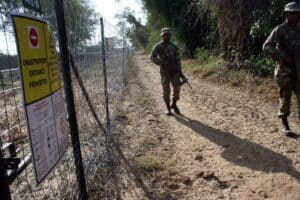A solid defence industry can be a key driver of economic growth as well as national stature and prestige for any country.

Necessity, so the saying goes, is the mother of invention.
And, human beings being what they are, our biggest technological leaps have been as the result of a war or an arms race.
Flying progressed by leaps and bounds during, and after, the World War I, while the second global conflict of the 21st century accelerated air travel, literally, with the perfection of the jet engine.
In South Africa, the isolation and international embargoes brought about by international censure of apartheid, along with an escalating internal security problem and a Cold War proxy fight on behalf of the West against the Soviets and their surrogates, meant the local arms industry blossomed.
In the 1970s and 1980s, the country’s arms making and exporting consortium, Armscor, produced new weapons and military-related systems at breakneck speed, supposedly to establish an indigenous weapons manufacturing
capacity so the country could survive the arms embargoes.
In reality, many sections of the weapons boycott on South Africa were illusory. When the SA Air Force produced its Oryx transport helicopter and later the Rooivalk attack chopper, the authorities carefully obscured the fact that the basic systems of both aircraft came from the French Super Puma.
There was a similar situation with the Cheetah, a development of the French Mirage which borrowed heavily from the Israeli-made Kfir jet fighter.
British and French sub-systems were, despite the embargo, a vital part of a number of SA Defence Force inventories.
Yet, there was some brilliant home-grown engineering. Frequency hopping radios were comparable to the best in the world … so much so that South Africa exported them globally, via a network of foreign front companies.
EW (electronic warfare) capabilities in South Africa were among the best in the world, with SA-made components ending up (via a circuituous route) in places like cockpits of US Navy F-14 Tomcat fighters.
Armscor was also ahead of the world in applying drone tech to the battlefield, from the major war in Angola in 1987/88, when they were used for surveillance.
In 1994, shortly before the election, I sat with engineers in a control room at Kentron in Pretoria, as one of their drones produced amazingly high resolution video of aircraft taking off from Johannesburg airport, from a distance of 30km away.
Those drones became part of the 1994 election security network. It is sad, therefore, that the SA arms industry is basically crumbling. Arms maker Denel’s employees are only being paid 20% of their salaries and the uncertainty, corruption and incompetence surrounding the state-owned arms business has seen many talented engineers leave the country, taking their skills with them.
Already, defence experts have seen virtual carbon copies of cutting edge SA systems being made and marketed elsewhere.
Before I get accused of hankering after the good old days of apartheid, or even being a warmonger, let me say that an arms industry, fuelled by a strong export order book, stimulates the rest of industry in a country – to say nothing of creating, and retaining, skilled jobs.
A solid defence industry can be a key driver of economic growth as well as national stature and prestige.
Without it, though, we will be, at best, another “also ran” nation.






